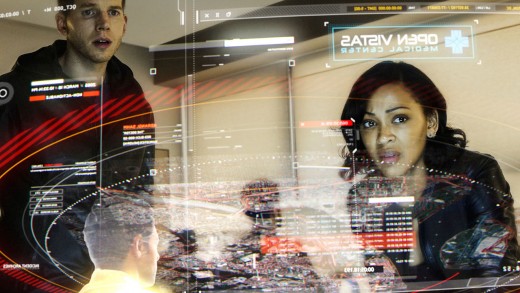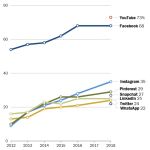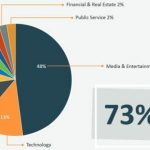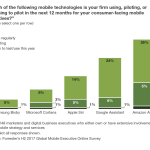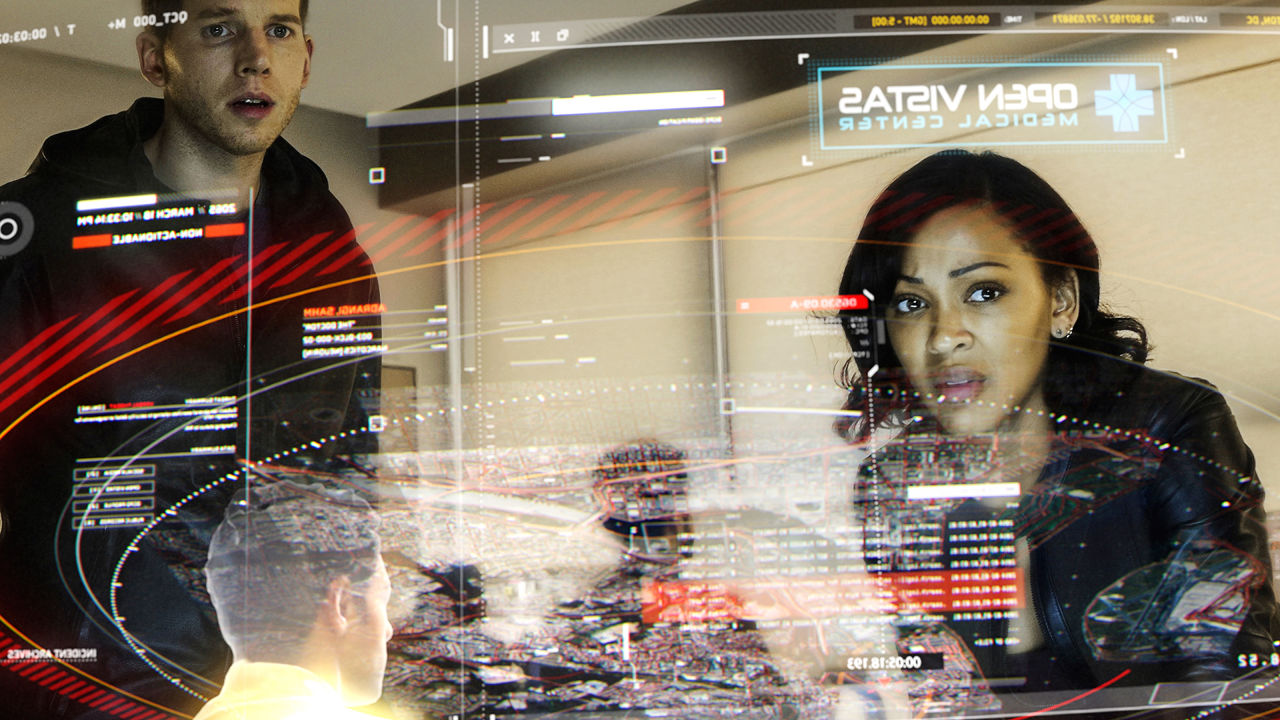How MIT Media Lab Pictured the way forward for Tech And advertising For “Minority record”
The producers adopted Steven Spielberg’s lead and asked MIT researchers to conjure how our lives may seem in 50 years.
September 21, 2015
When Steven Spielberg asked MIT researchers to John Underkoffler to check the longer term for his 2002 sci-fi film Minority record, a few of the resulting scenarios—drones, id scans, shopper-tailor-made promoting—expected applied sciences that might quickly develop into commonplace.
Now, producers for Fox tv’s Minority file spin-off (debuting Monday September 21st) have again grew to become to MIT, recruiting Media Lab graduate Greg Borenstein to set the futuristic stage for its story. Set in 2065, this Minority file follows retired “pre-cog” sprint (Stark Sands), who makes use of his psychic items to lend a hand Washington D.C. detective Lara Vega (Meagan excellent) stop crimes before they occur.
Borenstein, who did graduate research on the Boston college’s Playful methods team, consulted with different MIT brainiacs to undertaking a truth-primarily based vision of what city life would possibly in fact appear to be 50 years from now. Borenstein talks to Co.Create about emotionally custom-made merchandising, digital camera-embedded contact lenses, visitors-smashing mega-automobiles and different Minority record phenomena draw in an instant on nowadays’s cutting edge applied sciences.
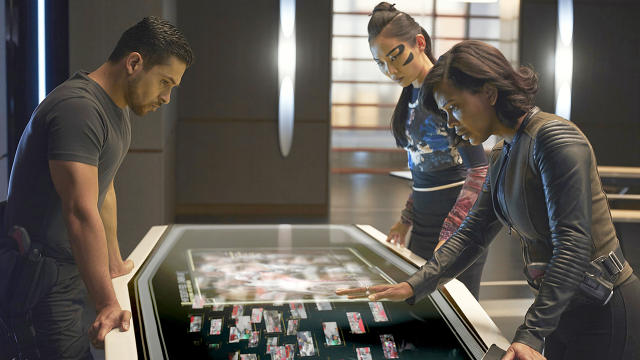
Emo-promotion
When sprint sits down in a public transit automobile, the window straight away flashes video ads tailored to his persona and emotional state. “in the authentic film, advertisements have been custom-made for you as you walk via buying areas,” Borenstein says. “That envisioned lately’s digital expertise the place we get tracked shifting across the web and spot personalized commercials according to our habits. For the tv express, we add some other layer as a result of analysis teams are actually working to capture now not simply your id, however your feelings.”
Borenstein cites Rosaline Picard’s Affective Computing challenge at MIT Media Lab as idea. “They use sensors to become aware of whether or not you might be agitated or secure by reading the whole lot from your coronary heart price to micro facial expressions,” he explains. “On Minority report, no longer best does the advert be aware of dash’s identification but it additionally is aware of a little bit bit about how he’s feeling presently. that idea came straight out of the Affective Computing team.”
3-D Skype
dash consults with a hologram-like version of his sister Agatha (Laura Regan), then shuts her into a suitcase. “We’re imagining telepresence as being like the Skype of 2065,” Borenstein explains. “One giant problem with telepresence at the moment is that you’re speaking to a picture on a flat display, and deeper physical interactions can never be captured in that roughly video picture. We wanted to extrapolate one thing like Skype into a rich physicalized presence.”
For Minority file, he says, “We imagined a three-D scanning camera pointed at an individual. The tool then transmits that data to inflatable tissue subject matter that takes on the colours and shape of the sender.” the idea is inspired in part by Professor Hiroshi Ishii’s Tangible Media crew. “they’re seeking to move from bits to atoms by means of making tangible interfaces that in reality interact physically with data. right now Ishii is engaged on something referred to as the knowledgeable desk, which explores tips on how to collaborate the usage of 3-D scanning cameras and programmable physical interfaces.
faraway managed natural world
in the season premiere, a prison controls the flight sample of attack birds via wireless signals that prompt implants embedded in their brains. “We’re extrapolating on tendencies occurring presently that help you alter the states of neurons within the brains of animals,” says Borenstein. “MIT optic-genetics pioneer Ed Boyden discovered the right way to genetically modify an organism so the neurons fire electrically when exposed to certain frequencies of sunshine. it’s already been executed on worms and mice, so this expertise is in reality just getting began.”
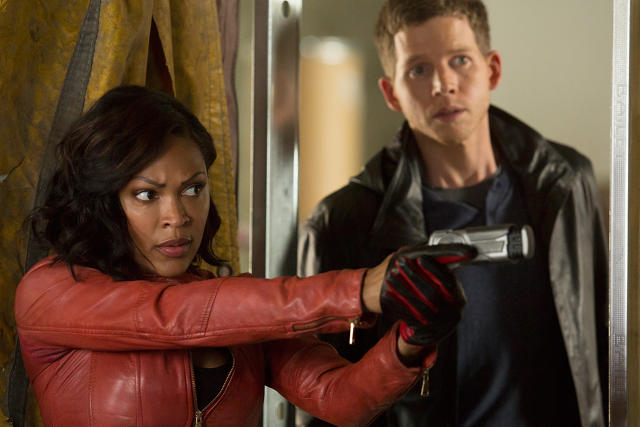
Extinct Species 2.zero
Minority’s file‘s vengeful villain weaponizes passenger pigeons, which become extinct 100 years in the past. not an issue in 2065, predicts Borenstein. “persons are working sequencing the preserved DNA of passenger pigeons and repairing components of it,” he says. “at some point in the following few years will give delivery to a passenger pigeon and the species will probably be brought again from extinction through these efforts.” Borenstein credit the pigeon subplot to research currently being carried out by Human Genome project chief George Church and his group. “George can be working to convey back the Ice Age woolly tremendous using those self same tactics,” Borenstein says.
Contact Lens Cam
When a paranoid pre-cog handler Wally is approached by way of Detective Vega, he asks her “Is your contact lens nonetheless recording?” it’s a smart query at some point, Borenstein says. “law enforcement on our exhibit wear augmented fact contact lenses and cameras are a key part of that interface. they’re mainly an developed model of the body digicam police officers wear nowadays.”
Self-using Mega cars
In Minority record‘s metropolis of the future, people get around in cars joined collectively like educate vehicles to form large mega-vehicles. “the original film depicted self-driving cars but that also interprets into self-driving site visitors,” Borenstein explains. “We tried to imagine how self-driving cars will be used to create a public transit device. As twenty first-century cities turn into more dense, person vehicles might come from the suburbs into these busy thoroughfares and interlock physically. They’d use self-riding skills to react dynamically to traffic stipulations so that when passenger-sized automobiles interlock or disconnect going through these thoroughfares, you’ll have the very best of particular person car system and absolute best of mass transit.”
digital Crime Scene
When Detective Vega investigates a criminal offense scene, she visualizes a virtual scenario generated via data collected from the website. Borenstein says “right now, augmented reality apps in your smart cellphone can pull out knowledge from video and overlay it. by means of 2065, we see that evolving into an augmented truth contact lens interface that enables Vega to appear into the crime scene and spot this data overlay that integrates all of the forensic knowledge.”
Borenstein points to products like Microsoft HolloLens and Magic jump as precedent for the totally loaded contact lens of the future. in Minority record. “I recall to mind Vega’s machine as a game engine or a physics simulation that can take the pattern of glass damaged on the ground, fingerprints and DNA discovered across the rental to generate this rough cloud of a person. it is no longer a video recording as a result of they failed to see the original perpetrator, but this expertise would re-assemble what took place in order that Vega can fast figure out how the physical evidence within the room received to be that way.”
fast company , read Full Story
(80)

